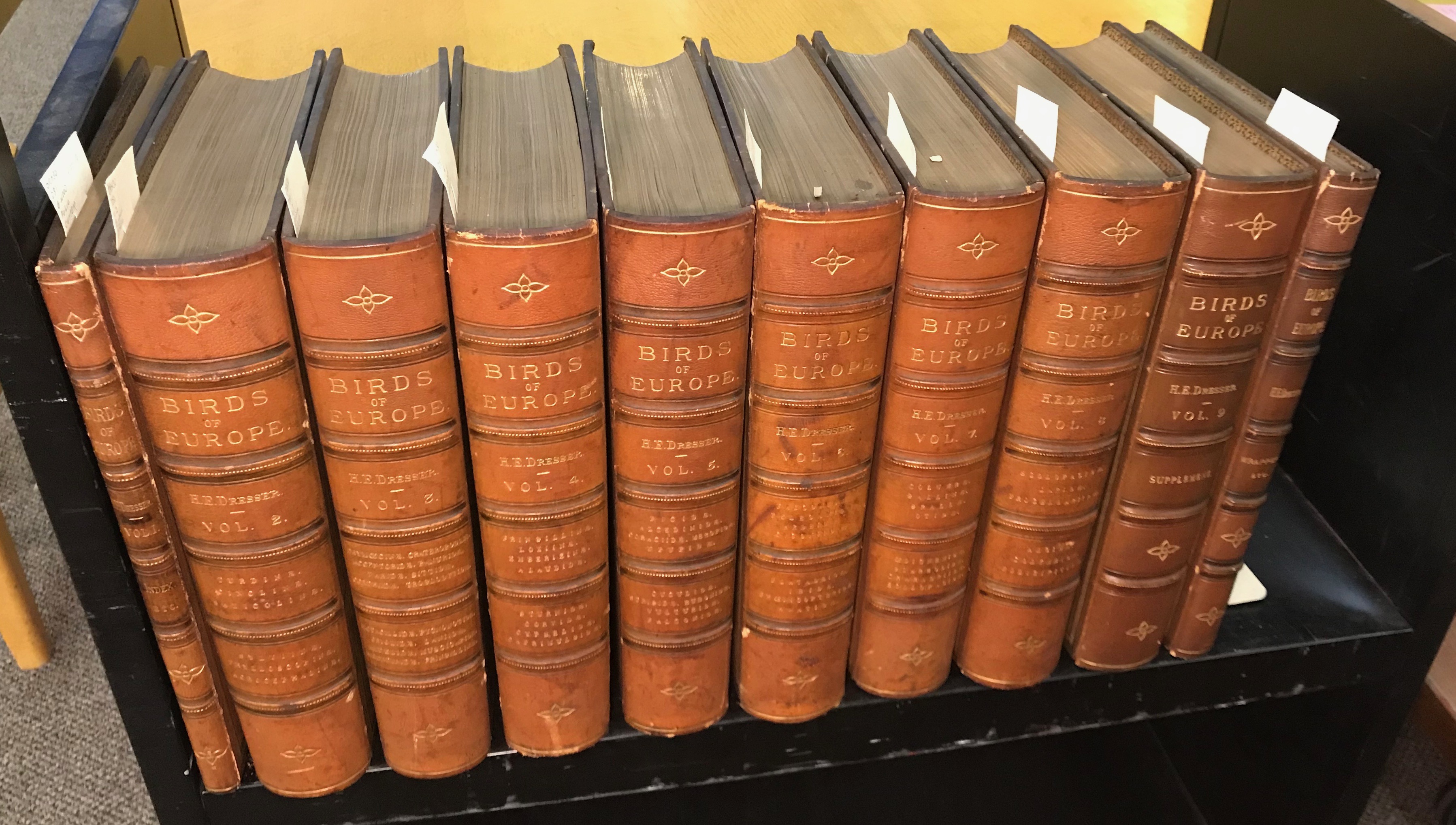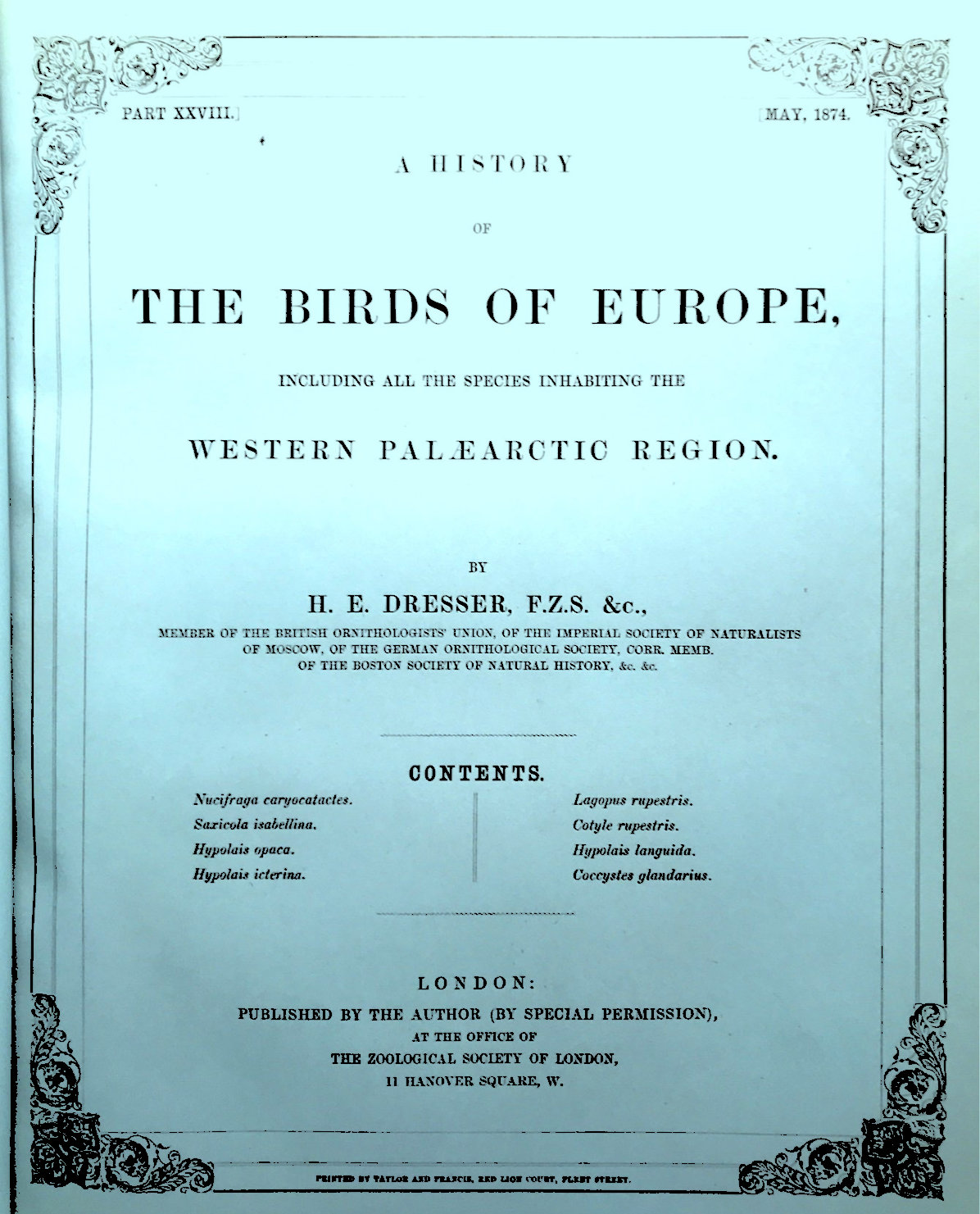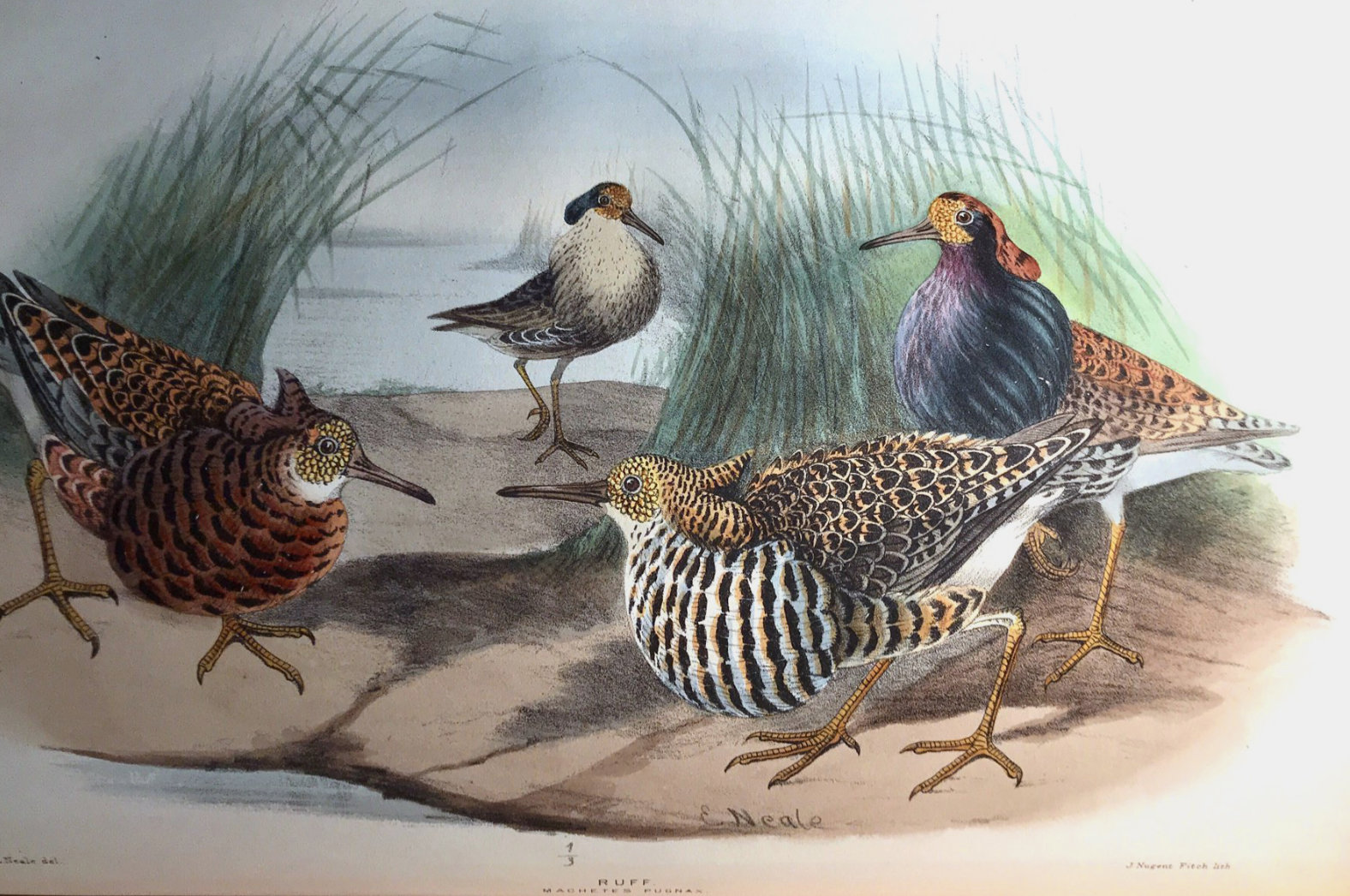At next year’s annual AOS conference in Anchorage, Alaska, the role of women in ornithology will be one of the highlighted themes. This is an important initiative for several reasons, and will be the focus of several posts here in the coming months.
Most ornithologists are familiar with the names and accomplishments of Margaret Morse Nice, Rachel Carson, Brina Kessel, Fran Hamerstrom, Louise de Kiriline Lawrence, and Florence Merriam Bailey, but what about Hilda Cinat-Thompson [1], Lady Elizabeth Symonds Gwillim, Genevieve Estelle Jones, and Althea Sherman? Women play such a visible role in ornithology (and most sciences) today, that it is easy to forget that women ornithologists were scarce before about 1960. Even those women who contriubuted to the history of ornithology tend to be relatively invisible.
As I have highlighted previously [2], the national ornithological societies that formed in the 1800s were all founded by men, and women were very much in the minority of their membership for much of the twentieth century. That’s just a fact, and I don’t see any point in attempting to rewrite that history. There is a lot to be gained, however, in knowing more about the women who did contribute to the development of ornithology and celebrating their contributions. Unfortunately, the contributions of many of those women to ornithology were never recorded, so they may forever be invisible—at least by name—to history. Today’s post highlights just one of what must be many instances of invisible women who made a great contribution.

From 1871 to 1882, Henry Dresser published the 84 parts of his monumental A History of the Birds of Europe. Dresser was a prominent timber and iron merchant by day, and an ornithologist in the evenings—and presumably weekends and holidays, given his phenomenal productivity. During the mid-1800s, he made his fortune as a merchant in London, and began collecting birds and eggs on various field trips [3]. He eventually amassed a huge collection of bird specimens, eventually purchasing specimens from collectors and dealers around the world. In addition to a handful of excellent books, he also published more than 100 papers about birds. Dresser was well-connected in ornithological circles, regularly corresponding with Alfred Newton and Alfred Russel Wallace, for example, and was BOU secretary from 1882-88 [4].
 Dresser’s Birds of Europe was published in separate parts, by subscription, so that he could use the income from subscriptions to fund the entire project [5]. Subscribers, of which there were eventually more than 300, received an unbound section of both letterpress and plates in blue paper covers every month, and many of those were eventually bound into leather-covered volumes by the subscribers. The whole set cost subscribers £52 10s, or about £5000 (roughly $6500 US in today’s currency). You can pick up a full leather-bound set today for only $23,000 US at some of the antiquarian booksellers, which is actually quite a bargain given the rate of inflation over the past 140 years [6].
Dresser’s Birds of Europe was published in separate parts, by subscription, so that he could use the income from subscriptions to fund the entire project [5]. Subscribers, of which there were eventually more than 300, received an unbound section of both letterpress and plates in blue paper covers every month, and many of those were eventually bound into leather-covered volumes by the subscribers. The whole set cost subscribers £52 10s, or about £5000 (roughly $6500 US in today’s currency). You can pick up a full leather-bound set today for only $23,000 US at some of the antiquarian booksellers, which is actually quite a bargain given the rate of inflation over the past 140 years [6].
Each of the 634 species in Birds of Europe is illustrated on a superb colour print of the bird—often male and female, sometimes a chick or two—produced mainly by the outstanding 19th century illustrator J. G. Keulemans, plus a few by Joseph Wolf and Edward Neale. These illustrations are remarkable for their accuracy and the pace at which Keulemans made them, often in the midst of working on other projects.

To save time (and costs) Keulemans made most of these illustrations by drawing with sharp-pointed greasy crayon directly on the lithographic stone that would be used to make black outline drawings that would be coloured by hand to make the plates. Keulemans was renowned for his ability to use a study skin to make a life-like painting of a bird that he had not even seen in the wild. The fact that he could draw in crayon (in reverse!) on a lithographic stone without working from a sketch seems impossible to me, but then again I have no artistic talents whatsoever. Once the first satisfactory print was made, he used watercolours to make the final master copy. Keulemans only painted the master copy—all of the others that eventually ended up as plates in the book were painted in watercolours mainly by young women [7] in the employ of colourist workshops, using Keulemans’ originals as a guide. We do not know who these women were but the quality and quantity of their work—and thus their contribution to what many consider to be one of the finest bird books ever produced—was outstanding.

As was the custom of the day, Dresser thanked the men who owned the companies who did the colour work and made no mention of the women who actually did the colouring. I am reminded of an old illustration of women doing all of the work at a switchboard in Paris with the male supervisor overseeing [8]. Here is Dresser, in his Preface: “…and the colouring was entrusted to Mr. Smith and Mr. Hart, the latter of whom is well known as the artist employed by Mr. Gould during the publication of all his later works.” [9].
Lest you think the colourists had no particular talent and were merely making passable copies of the works by the master (Keulemans) have a look at some of the detail, below, on a couple of the plates. Exquisite. The pace at which those women worked must also have been phenomenal. We do not know how many women were employed by Smith and Hart to do the colouring, but we know that they produced a quarter of a million copies (yes, 250,000! [10]) of the Keulemans’ originals in about 12 years. Even at one copy a day—a pace that I cannot even imagine—about 65 artists would have been needed to do all of that colouring [11].

Keulemans apparently inspected all of the colouring to ensure accuracy and consistency. I have looked at several copies of the original plates and cannot detect any difference between copies of the same plate even though they must have been painted by different, unknown, women.
We often vilify the practices of the past because they do not match our contemporary standards of fairness, equality, and recognition. No doubt our own academic descendants will similarly criticize us for our apparent failings. Instead, I think there is some value in trying to identify work that made important contributions to the history of ornithology, even in cases like this where we cannot positively identify who actually did that work. It would be interesting to know if any of the colourists for Dresser’s work went on to be ornithologists or artists in their own right.
SOURCES
- Dresser HE (1871-82) A History of the Birds of Europe, including all the species inhabiting the Western Palaearctic Region [84 parts; first 13 parts coauthored with RB Sharpe]. London: Privately published. (available online here)
-
McGhie HA (2017) Henry Dresser and Victorian ornithology: Birds, books and business. Manchester, UK: Manchester University Press.
Footnotes
- Hilda Cinat-Thompson: did pioneering work on sexual selection in budgerigars but is so little known about her that the only references I can find to her online are in the book I wrote with Tim Birkhead and Jo Wimpenny on the history of ornithology (see here)
- formation of ornithological societies: see previous posts here, here, and here
- various field trips: to Texas, Mexico and New Brunswick (Canada) for example. Most of his collection eventually went to the Manchester Museum
- Henry Dresser’s life: details here were taken mainly from a new book (McGhie 2017) about Dresser that I will be reviewing here in a few weeks
- by subscription: the initial subscription price was £6 6s (about $8.50 US) per year for 12 parts with each part containing 10-12 species, and the whole project planned to take 6 years comprising about 72 parts, with each year constituting a volume (McGhie 2017, page 137)
- rate of inflation: an online calculator here, suggests that $6500 in 1880 would today be worth $153,000.
- we do not know who the colourists were: it might be possible to examine the records from Hart and Smith, and their workshops, to actually identify the colourists but that information is not yet readily available
- telephone switchboard operators: many of the earliest switchboard operators were young men, but it was soon recognized that women were generally more courteous. Probably more significantly, though, women were paid at only one quarter of the salary of the men! More info here.
- Dresser quotation: from page iv of Vol 1 in Dresser (1871-1882). He is referring here to Smith, Elder and Co., and to William Hart who was both an artist and a colourist who, presumably, supervised the work of several others.
- 250,000 copies: actually at least 214,587 coloured plates based on 633 plates per volume and 339 copies at one copy per subscriber. Presumably there were more plates completed than there were subscribers, as the number of subscribers grew through the 12 years of the project.
- 65 colourists: based on 250,000 coloured plates, about 250 working days per year, and 12 years for the project
IMAGES: all those of and from Dresser’s Birds of Europe were taken by the author in August 2018 at the Blacker-Wood Collections in the McGill University Library, with thanks to the librarian, Lauren Williams, for permission to use those photographs here; women telephone operators from Wikimedia Commons
Nice post! Really creative to figure out and celebrate the women who can’t even be named. I wonder if anyone remembers an ancestor that did such work. And how little we know of the collaborations between women and the men that were the actual authors of record. Thanks for this!